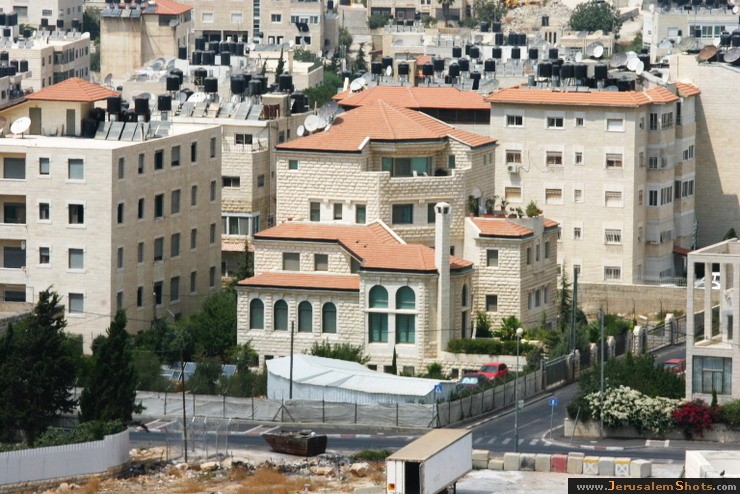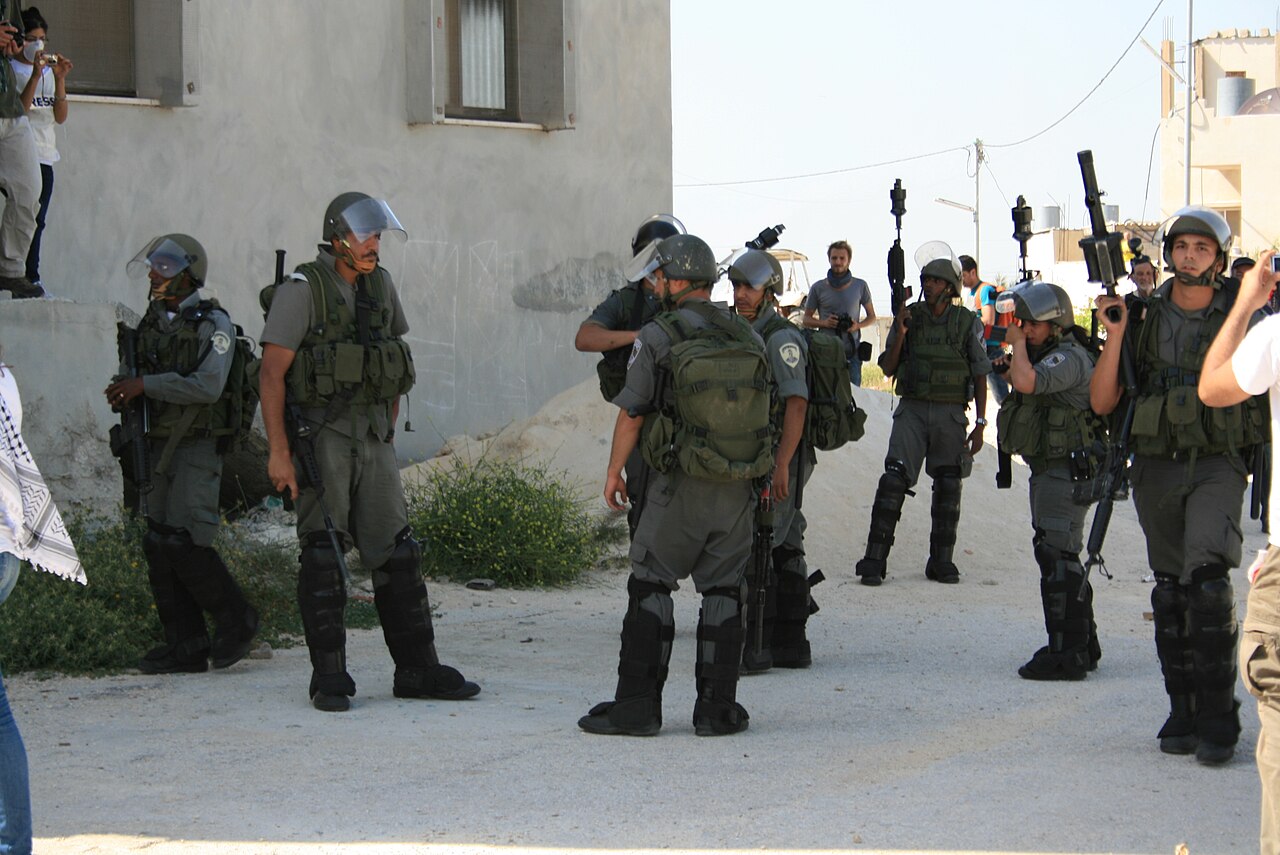The mistranslation was intentional. The English online-version of Yedioth Aharonot, the Hebrew largest newspaper, read “10 Border Guard officers injured in Shufat,” while the Hebrew original title translates as “Stones and Stubbings in Shuafat, 10 Mista’aravim Injured.”

jerusalem photos region shuafat beit hanina east jerusalem
The existence of “mista’aravim” (Hebrew for “disguised as Arabs”) soldiers is kept in ambiguity; their actions are often disguised as operations of other units or criminal gangs.
A related camouflaging tactic is the misspelling of the involved persons, units and names; the difficult transliteration of Hebrew and Arabic names into English simplifies this. That works fine until something goes wrong and the testimonies are sent urgently to hospitals, as happened in this case.
Even in such cases, media reports in English are softened into legality. In this case, which took place on November 6, one of the soldiers was mildly injured by the stubbing of a 17 year-old boy, another one was mildly injured by a rock that hit his head, and other eight were slightly injured by stones.
The kid was injured by a soldier after his detention. All of them reached civilian hospitals in Jerusalem. The mayhem took place in Shuafat, a refugee camp north of Jerusalem. The area belongs to East Jerusalem, which suffers of serious Israeli annexation attempts.

Border Police Mistaaravim in action
IDF Counterterrorism Unit(s)
Finding errors in reports and reviews of IDF special units is common. Contradictions between different descriptions seem to be the norm and eventually discredit most sources.
Oddly enough, many times the reports are correct; their only fault is being incomplete. With few exceptions (Kingfisher being the most obvious one), these units rate as battalions.
However, beyond the formal definition and their subdivision into platoons, there is no operational similarity between them and regular battalions.
Each commando platoon has a specific training, which transforms it into a military expert in that topic. Then, specialties are constructed in a matrix fashion across the army. Every commando unit has a counterterrorism specialized platoon.
This makes it easier for the IDF to have at any moment an available specialist on the topic.
Moreover, it allows a combination of capabilities that increases maneuverability. In special conditions, such a grid-organization allows answering complex situations. Imagine a need to perform a counterterrorism operation atop Mount Hermon, at the ski resort.
Sending a commando unit usually working in the desert will cause difficulties. The soldiers won’t have proper equipment; they won’t know how to behave in the snow. In such a case, a mixed team from Sayeret Matkal Alpinist and its Counterterrorism platoons will be formed and delivered.
Such a complex organization demands an independent training platform. Accordingly, the designated platoons are trained at Mitkan Adam (“Adam Installation,” near Jerusalem).
The specific training varies depending on the basic training of the soldiers joining the course, but at its center is a four-month Mista’aravim course, which covers Arab traditions, language, and behavior. This is complemented with intensive camouflage training.
At the end, the soldiers may stay for an additional month of specific training; snipers and drivers are the most common in this category. The course is not limited to elite units. Mishmar HaGvul (“Guard of the Border” in Hebrew) is a mixed police-army unit. Its members are soldiers, but the unit activity is under the command of Israel Police.
This trick allows Israel to deploy it in places where the army or the police would be seen as acting beyond their jurisdiction (army within the Green Line, police in the West Bank).
The unit is characterized for recruiting minority soldiers (Bedouins, Circassians, Druzes, and others) and many new immigrants. They often are sent to disperse protests in the West Bank. Accordingly, they have a small counterterrorism unit known as “Yamas.” Its name is the Hebrew acronym for “Yehidat HaMista’aravim,” namely “The Disguised as Arabs Unit.”

Israel Border Police | At least four Mistaaravim leaving Palestinian Territory at an Improvised Police Blockade
Warsaw Ghetto, Israel Ghetto
The event was typical. A force of mista’aravim from Mishmar HaGvul entered Shuafat and detained somebody. Unlike similar operations I have described, this one took place in daylight, and thus disguised soldiers were used.
Expectedly, after they found the person they were searching and detained him, their disguise was rendered useless. A knock on the door, its violent opening, shouts, identification requests, more shouts by the people that remained in the house, disguises that get tampered during the violence, there is no way of performing this silently.
While attempting to leave the refugee camp, they were persecuted and hurt as abovementioned. Even the Hebrew report doesn’t mention if the person originally detained remained in custody; this is a clear sign that he escaped.
Israel’s Special Forces are finding more difficult to perform such actions; most of them are illegal by all definitions, all of them are illegitimate. This case was symbolic for more than this reason. The force involved belonged to Mishmar HaGvul.
In the 1956 Suez War, this unit was responsible for the Kafr Qasim massacre. In the war’s second day, a curfew was imposed on Kafr Qasim. Villagers who had worked in the fields and were unaware of the curfew were shot upon their return; 49 of them died.
Israel Supreme Court rendered the attack illegal and rule that there is an obligation of soldiers to disobey manifestly illegal orders. Firing upon unarmed farmers is such an order.
More than fifty years later, Israeli soldiers have manifestly failed to understand the court ruling, targeting unarmed Palestinian civilians with fire weapons.
Yet, people learn, and in their physical weakness have learned to bravely face the commandos with sticks and stones. Wasn’t that the main lesson learned from the Nazi Warsaw Ghetto?
Mr. Tov Roy is one of the frequent contributors to The 4th Media.
